

James Heller interview
By Scott Stilphen
(2014)
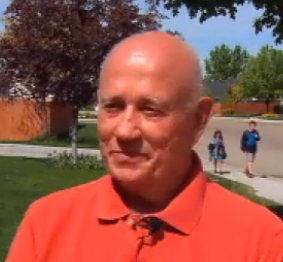
Ask any Atari fan about the infamous Atari landfill legend, and you'll hear a myriad of tales regarding it. Although the story was well-documented at the time, various media outlets fudged the details of the event to the extent that the real story of what happened devolved into a 30-year-old myth. Recent excavation efforts earlier this year (April 26th, 2014) set out to 'bust' this myth and bring the story back to its origins, but with even more media coverage this time around and details still being misconstrued, it was time to bypass all the journalists and weekend historians and ask the one person who truly knows what happened - James Heller. He was a plant manager for Atari for 7 years, and was the person who arranged to have games and hardware dumped at the landfill in Alamogordo, NM.
Q: How did you come to work for Atari? When did you start/stop working for them?
James Heller: I was offered employment by Loren Schoof (Plant Manager in Sunnyvale) whom I had worked with before. There wasn't an interview. I worked there from September 1976 to September 1983.
Q: You mentioned you were a manufacturing production supervisor there. Was that your only title?
James Heller: I was the Test Supervisor, Manufacturing Manager, Operations Manager in Sunnyvale, CA, and the Plant Administrator in El Paso, TX. I have no information on design, engineering, sales, etc. Just manufacturing.
Q: The 2 plants that you were assigned to werenít warehouses but plants, correct? What was produced at them, or what were they used for?
James Heller: The buildings at 1195 and 1215 Borregas (plus the building behind 1195 that Pinball had formerly occupied) in Sunnyvale, CA were manufacturing buildings. They produced the dedicated home Pong, Hockey Pong, Video Pinball, the VCS, and the 400/800 computers. That was while I was at these buildings. They produced other Atari
products after I moved to other projects. The VCS console production was moved to Taiwan and Hong Kong.
I also had a building on Caribbean in Sunnyvale. I remanufactured VCS game consoles in this building.
Q: You're now inexorably linked to the infamous Alamogordo, NM E.T. landfill story, seeing as you were the one personally responsible for arranging it. KBOI TV did a short video with you a few days after the landfill was excavated, and I would be interested in hearing more about the story.
James Heller: It was just a quick interview that briefly discussed the urban legend, and the announcement that Lightbox Entertainment and Microsoft had uncovered the E.T. cartridges that were part of the urban legend. The interview was done to show the local involvement in a major news story.
The urban legend has been discussed for years. I also did interviews with the Associated Press and Wired magazine. The AP article has been repeated worldwide.
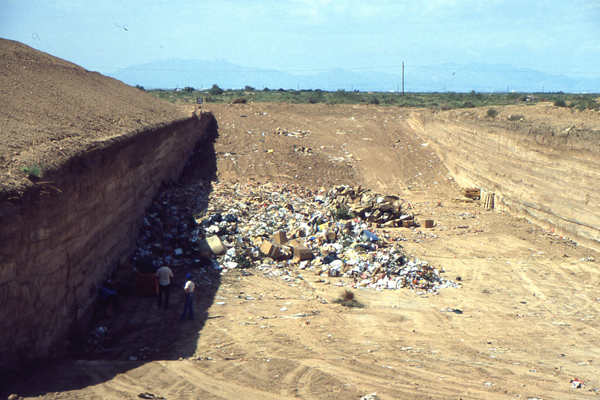
Landfill pit the day before the games were dumped, Wednesday September 21st, 1983. Photo courtesy of James Heller.
Q: A 5-man team of archaeologists who call themselves the "Punk Archaeologists" were partially funded by MicroSoft and Fuel Entertainment to excavate the site at the Alamogordo, NM landfill. Afterwards, they posted an article about it, stating there was "limited evidence of concrete (at least in the sampled area)".
James Heller: The pit where the Atari game cartridges were placed were in an area of about 50 x 100 feet. None of the cartridges were covered in concrete until the kids were found to be scavenging. That was after the third day of dumping. The concrete was placed in the landfill on Monday. I had no idea how much concrete was needed, so I guessed at 6 truck loads. My guess was wrong and all the games were not covered with concrete.
If the Punk Archaeologists had read the report sent to the State of New Mexico in support of the excavation, they would have read that Test Hole SB20 found the concrete cap at 31.5 feet. This series of test holes was done in 2004 to determine how toxic the waste materials were in the landfill. The company that did the test holes was not looking for the games. The hole dug at the landfill for the E.T. dig was just outside the main dumping site, thus, no concrete.
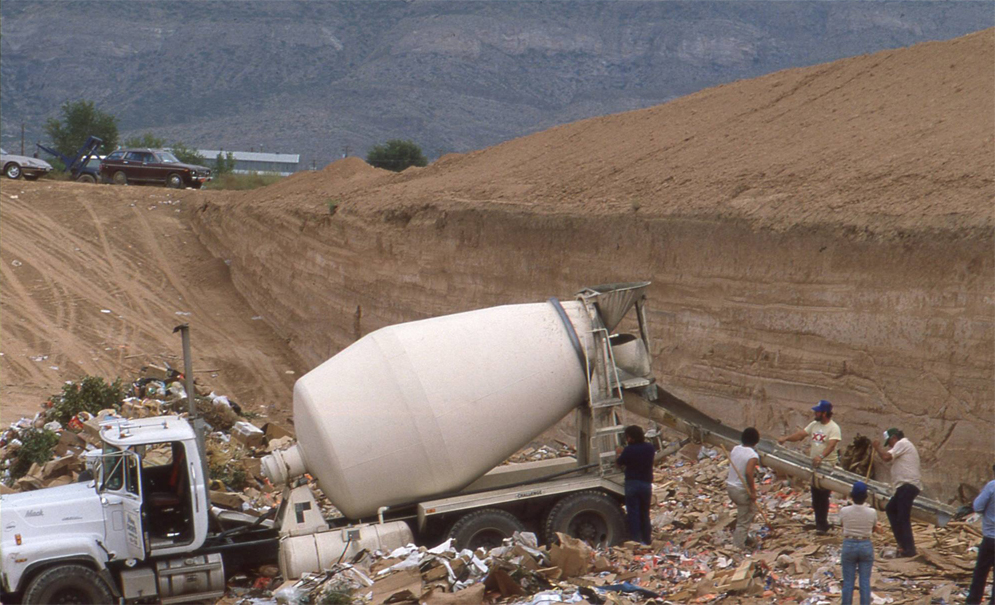
This is one of six concrete trucks pouring fresh concrete over the crushed games on Monday September 26th, 1983. Photo courtesy of James Heller.
Q: Regarding the Wired article, it states the games were only 20 feet down in the ground. If all the games were dumped in the same spot, how could games that were dumped first be 10 feet closer to the surface?
James Heller: As all the game cartridges were placed into the same pit and subsequently run over by a bulldozer, it is not possible to know where the first games were placed. The games could start out in one side of the pit and get pushed around to the other side of the pit in the crushing process. Alamogordo is not a large metro area, so the pit is small compared to large cities like El Paso.
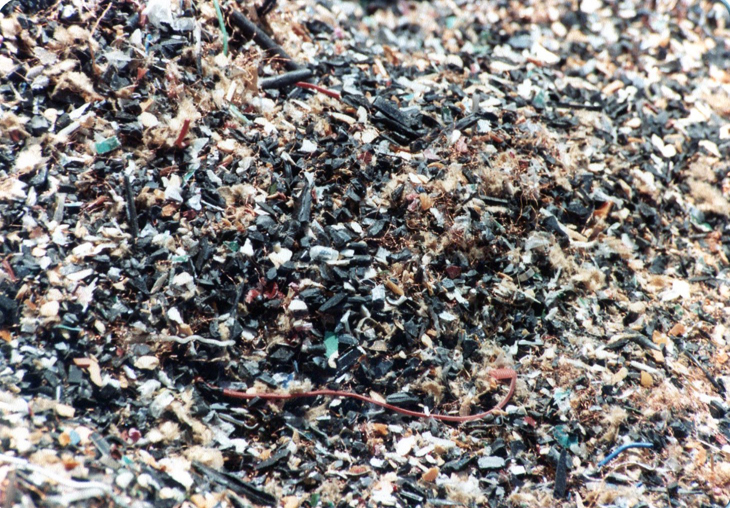
Properly-crushed Atari games after being bulldozed. Photo courtesy of James Heller.
The search for the games started before the actual dig. My documentation, in addition to other documents, were used to locate the actual dump site. I was at the landfill on the Friday before the public display on Saturday. Lightbox was doing an evening filming of participants in the documentary. I overheard Jonathon Chinn tell another crew member that they think they had found something. That was when the hole was at 20 feet.
On Saturday (April 26th, 2014), when the final dig started, it was three hours before the cartridges were unearthed, thus the 28-30 feet depth of the excavation. If there had been a 10 foot difference, that would have meant that the cartridges were buried several weeks later, which isn't possible as all the dumping had stopped by Monday.
Q: Thereís also stories regarding there were other Atari items there as well, such as consoles. Is that true?
James Heller: My intention was to dump cartridges only. I would say that 95% of the cartridges dumped were new. There were a number of different titles. I was just an advisor at that time. It appears that El Paso took the opportunity to discard old materials, including consoles, trackballs, etc, that been accumulating when they started their customer service project. So, yes, some consoles were dumped in Alamogordo. If the dig had occurred at another spot in the landfill, the results would have been different.
Q: Do you recall exactly how many truckloads of merchandise were taken there? I've read anywhere from 8 to possibly as many as 24.
James Heller: There were 12 truckloads, totaling approximately 750,000 cartridges.
Q: What was the purpose of the El Paso plant during this time, both prior to and after the dumping? There's different stories surrounding it, such as being used to hold merchandise shipped from Atari's Service Centers, and that the plant was being retooled and needed to be cleared out, hence your assignment to have the contents hauled away and dumped.
James Heller: That's partially true. The first El Paso building was on Beacon Street. It produced cartridges only and was closed in 1981 after the new building on Pellicano was opened. The Pellicano site produced game cartridges until about May of 1983 when all cartridge production was moved offshore. Production of game consoles (I donít remember which ones) was then moved to El Paso. El Paso also took over the receiving of returned merchandise from our vendors, which is part of what my group was doing in Sunnyvale.
Q: Who gave the order to dispose of the El Paso warehouse games? I think Ray Kassar was gone at that point, and James Morgan was the new CEO, correct?
James Heller: I have no idea who issued the order to dispose of excess material. I got the direction from the office personnel in El Paso. I never met or had any interface with James Morgan. The cartridges were dumped because they were excess inventory and I was looking to save money as instructed by my superiors. This was revealed in the AP article and KBOI news.
Q: I came across this from Jed Margolin's site. If you search for "buried", you'll find an interesting email from Kim Franusic:
|
From: KIM::FRANUSIC 23-MAR-1984 15:02 |
James Heller: I donít know who or what Synertek or Stevie-Boy are, but the rest of the statement is partially true and well documented in many online stories. It is the reason for the collapse of the video game market, not just Atari.
Q: Synertek was one of the chip manufacturers that Atari contracted with (American MicroSystems, OKI Semiconductor, and TSU are a few others). Steve might have been a salesperson who worked at Synertek. I'm guessing you've seen the infamous landfill thread on the Atariage forum by now. It started with some real research being done by Bruce S. (AKA "spud"), who's evidence was soon dismissed by the vocal minority, and later ended up with a discussion about where the rumored 2nd landfill is located.
James Heller: I read the same forum posts as you have. All I could do is laugh. The dump site that people are saying is the 2nd landfill is located at the corner of Borregas and Caribbean in Sunnyvale, probably not more than 200 yards from my warehouse, which was located 2 buildings away from the entrance to the dump. The landfill was operated by a friend of mine, who's parents owned it, and it had been there for years prior to Atari. This is not where the other cartridges (or anything Atari-related) were laid to rest, though.
My warehouse received materials from our distributors that were returned for credit.
Q: Regarding the possible 2nd (Atari) landfill, can you say where it's located and approximately how many games were taken there? And was it just games?
James Heller:
There were no other landfills that I am aware of. I had about 6 million
cartridges and about 140,000 reconditioned games sent to be put through a 1500
HP hammer mill at Markovits and Fox in San Jose, CA. They no longer
operate that facility and to my understanding the land has been reclaimed.
There was nothing buried there. All the cartridges and games were ground
up and sold for reclamation. There could have been some cartridges
destroyed at a different facility after I was laid off in September 1983 (I
worked for the El Paso facility for another month doing budgets, etc).
I read somewhere that Markovits and Fox operated a facility in Phoenix.
Q: Years ago, Jerry Jessop mentioned there were 2 other locations - one of which sounds like the Borregas Ave location you described. According to Jerry, there *are* Atari-related items buried there:
| I'll give you two better places
to look for buried Atari stuff. There is a huge landfill "mountain" at the
foot of Borregas Ave in Sunnyvale that is FULL of Atari stuff. In many
cases truckloads of completed consoles (Pong, Video Pinball, VCS's) were
tossed out of trucks into the paths of bulldozers. The former VCS final assembly building at 1172 Borregas (next to the 1195 PCB assembly building) has thousands (maybe hundreds of thousands) of obsolete ROMS buried in the concrete slab from it's 1976 construction. |
Director Zak Penn reportedly mentioned they were on the hunt for the prototypes, and that apparently around 5,000 were made and possibly dumped (in Alamogordo, NM). I don't know who Zak heard that from and I don't recall ever seeing that mentioned anywhere else. From what you had to say about the plant, I don't see why there would be any there. If anything, they'd be in the Sunnyvale dump.
James Heller: I know nothing about prototype games being in the landfill. Since Atari El Paso was manufacturing game cartridges prior to the dump, its possible that they made a small run of 5,000 cartridges. I agree that if a small number of prototype cartridges were dumped, it would have been in Sunnyvale.
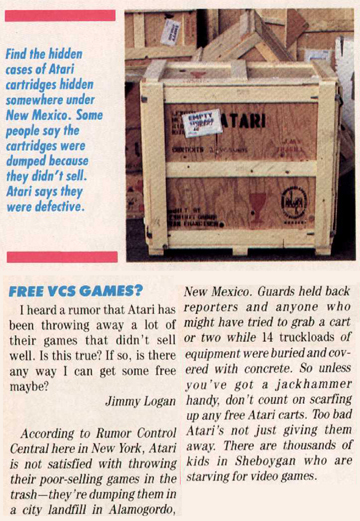
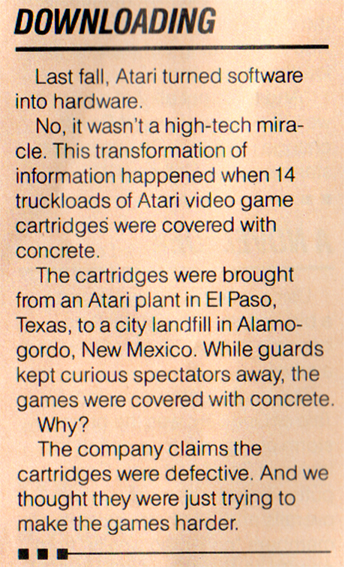
Letter from the February 1984 issue (pg. 6) of
Computer Games
(left);
news blurb from the March 1984 issue (pg. 13) of
Enter
(right).
Q: I once asked Howard Scott Warshaw about the landfill 'myth' and he replied never heard of it while he was at Atari, and was positive that if anyone would have known about it, it would have been himself. But one could surmise from Kim Franusic's email that it was fairly well-known inside of Atari at the time, and it's amazing, given the close proximity of the Sunnyvale dump, that Warshaw and others had no knowledge of games being dumped in landfills.
James Heller: I have an idea about why the confusion, but donít know for sure, so canít comment without solid information.
Q: Were there any other dumps besides this 3rd one?
James Heller: I was told that there might be, but donít have 1st-hand knowledge of anything else.
Q: Prior to and after working at Atari, did you work for any other companies who were in the video game industry?
James Heller: No, just Atari.
Q: What was it like working at Atari?
James Heller: It was the best job that I have ever had.
Q: Did you play video games back then?
James Heller: I mostly played Breakout. I had a 60-inch projection TV at the time. I have not played any video games since I left Atari.
Microsoft released the Atari: Game Over documentary before Thanksgiving 2014.
Check out my article for more information about the infamous video game crash.